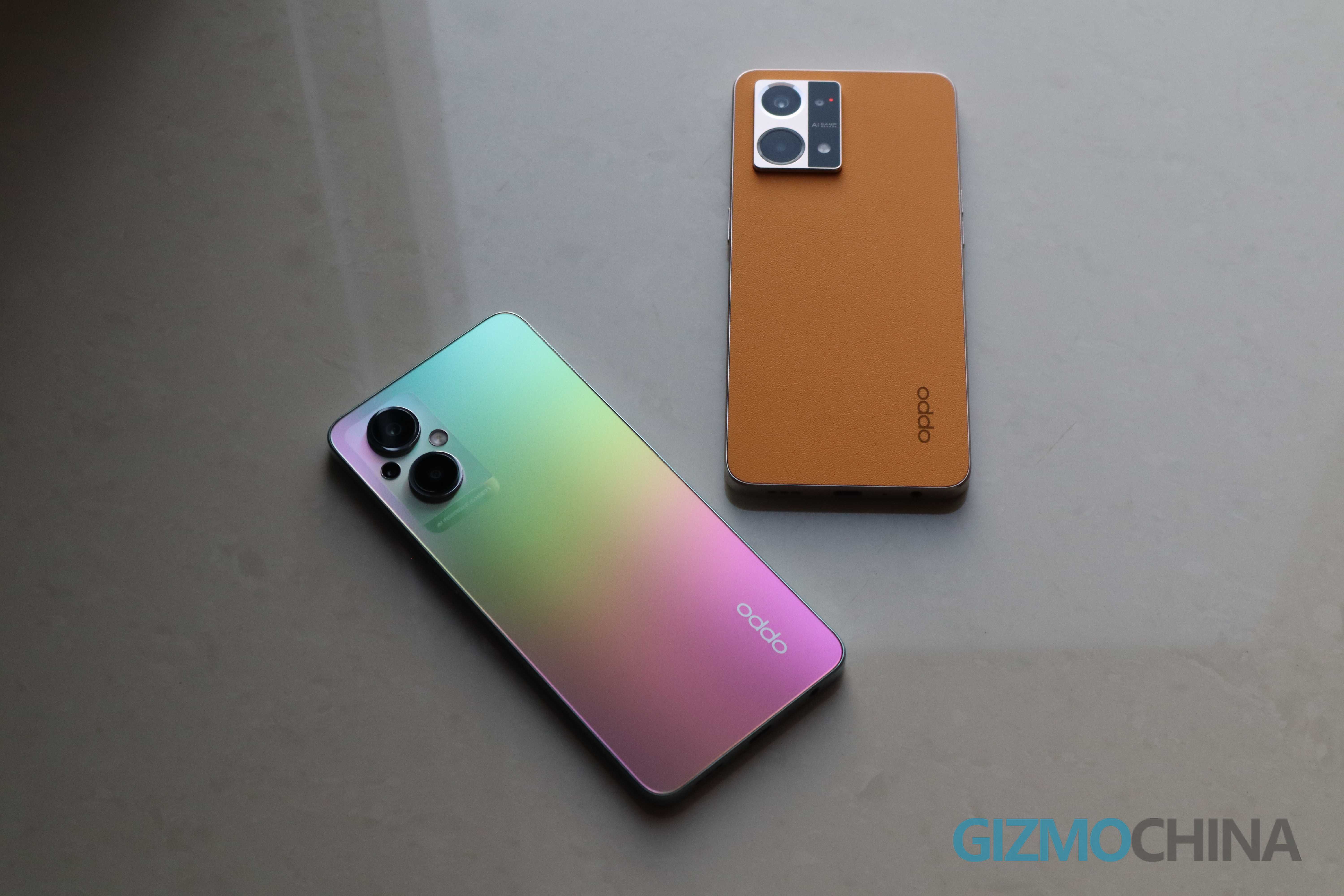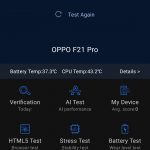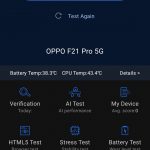Last week, Oppo officially took the wraps off the Oppo F21 Pro series in India. The lineup consists of two models, namely Oppo F21 Pro and Oppo F21 Pro. We have already published our review of the former device.
Now, let us compare it to the latter model in this article and find out whether the 5G-enabled variant is worth its asking price. For the unaware, the Oppo F21 Pro and Oppo F21 Pro 5G are priced at ₹22,999 and ₹26,999 respectively.
Before I begin, I would like to put a disclaimer that his comparison between the Oppo F21 Pro and the Oppo F21 Pro 5G is based on my personal experience with the review samples loaned to me by Oppo India. The opinions mentioned here are mine alone, and the company had no editorial input or early look.
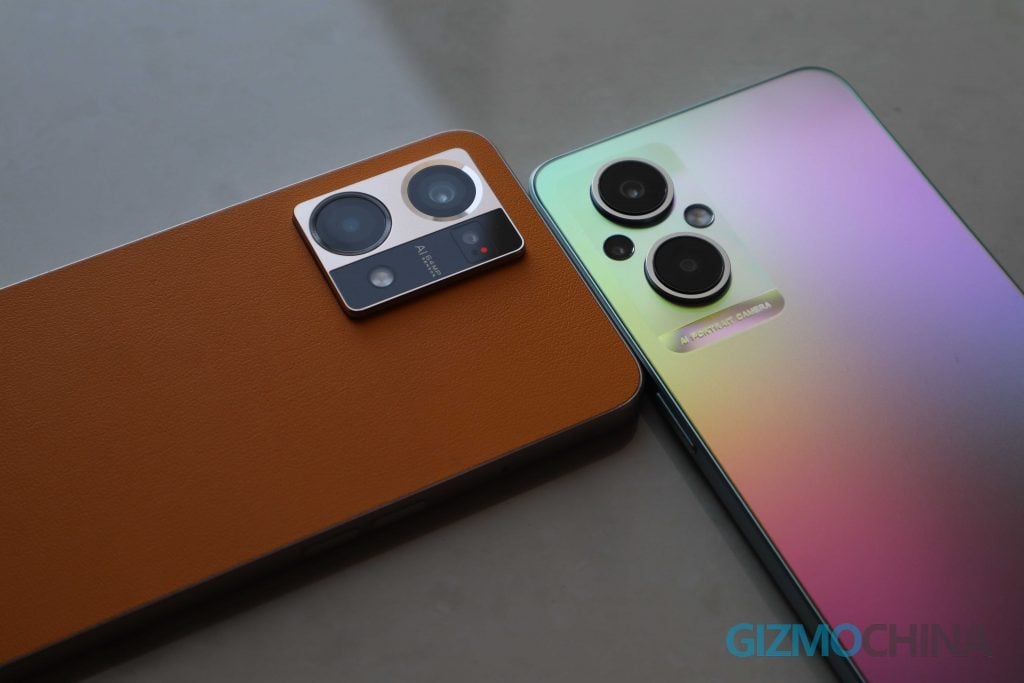
Oppo F21 Pro vs Oppo F21 Pro 5G: Which one should you buy?
Box Contents
Both the Oppo F21 Pro and Oppo F21 Pro 5G arrive in an identical box with the same list of contents. Buyers will find the following items in the retail box.
- Smartphone
- Transparent Case
- 33W SuperVOOC Charger
- USB Type-A to Type-C cable
- SIM Ejector Tool
- Documentation
Design and Build
In my review of the Oppo F21 Pro, I praised its design. It is one of the best-looking smartphones under ₹25,000. The same can also be said for the Oppo F21 Pro 5G, which is positioned in the under ₹30,000 category. However, I prefer the 4G model over 5G.
The 4G variant has a unique fiberglass leather finish on its back. But it is worth noting that this finish is only available on the Sunset Orange color option, since the Cosmic Black version has a matte glass finish.
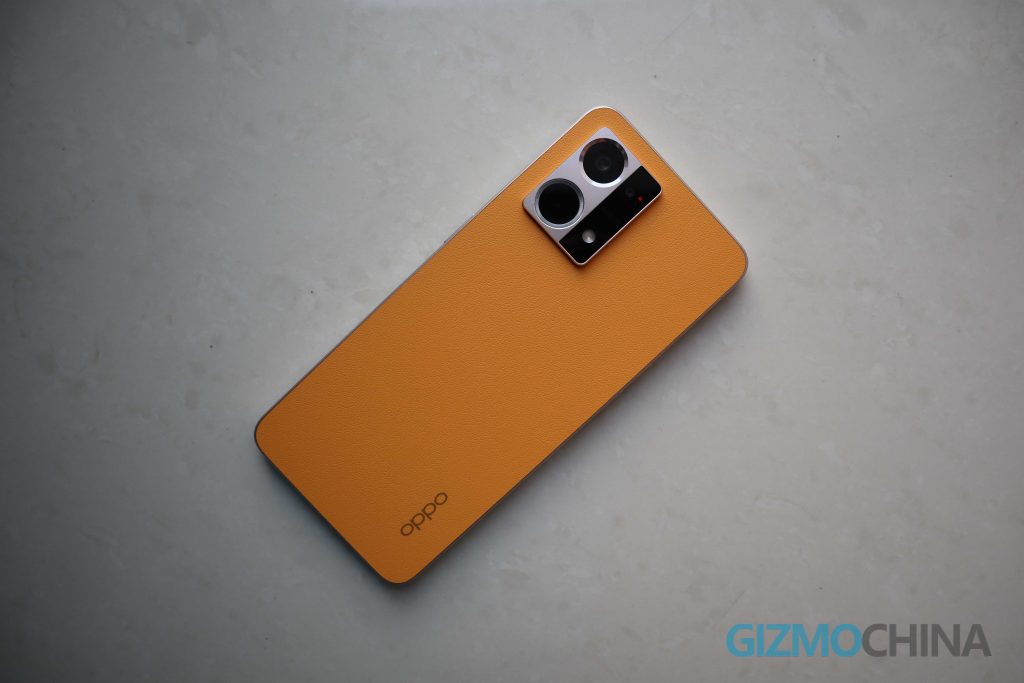
On the other hand, the Oppo F21 Pro 5G only comes in a glass finish for both Rainbow Spectrum and Cosmic Black versions. I have the former, and it looks like cotton candy when viewed from certain angles. At the same time, the colors look flat when viewed straight.
The orange-colored Oppo F21 Pro also feels better in the hand. It does not slip and looks unlike any other phone on the market. It surely is a head-turner. You don’t need a case unless you are one of those who drop their handsets often.
Whereas, the Oppo F21 Pro 5G is like a regular smartphone with a glass back. This means it is slippery in the hands, but features a matte finish to keep it free of smudges.
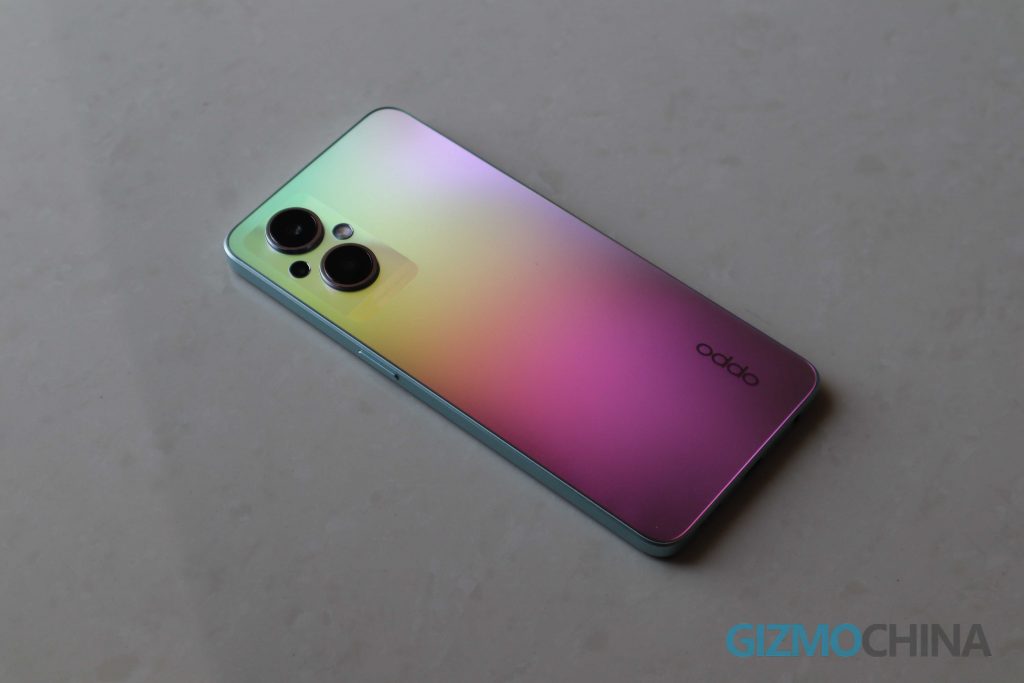
Talking about the rear camera placement, the sensors on the 4G model are placed on a rectangular island, which resembles an old-school camcorder. There’s a white LED ring around one of the cameras.
While the cameras on the 5G model are placed on the rear panel itself. Two of them even have blue-colored LED rings. Oppo calls them ‘Orbit Lights’. They look better than the single LED ring on the 4G device.
Display and Sound
The Oppo F21 Pro and the Oppo F21 Pro 5G sport an identical 6.43-inch AMOLED display with a resolution of 2400 x 1080 pixels (FHD+) and a 20:9 aspect ratio. The screen has a 180Hz touch sampling rate, a punch-hole at the top left corner, and can reach a peak brightness level of 600 nits.
The only difference between the two is the presence of a 90Hz refresh rate on the 4G model as opposed to the standard 60Hz refresh rate on the 5G model. This one change in the specs makes a day and night difference, at least to me. Once you are used to a high refresh rate screen on smartphones, there’s never going back.
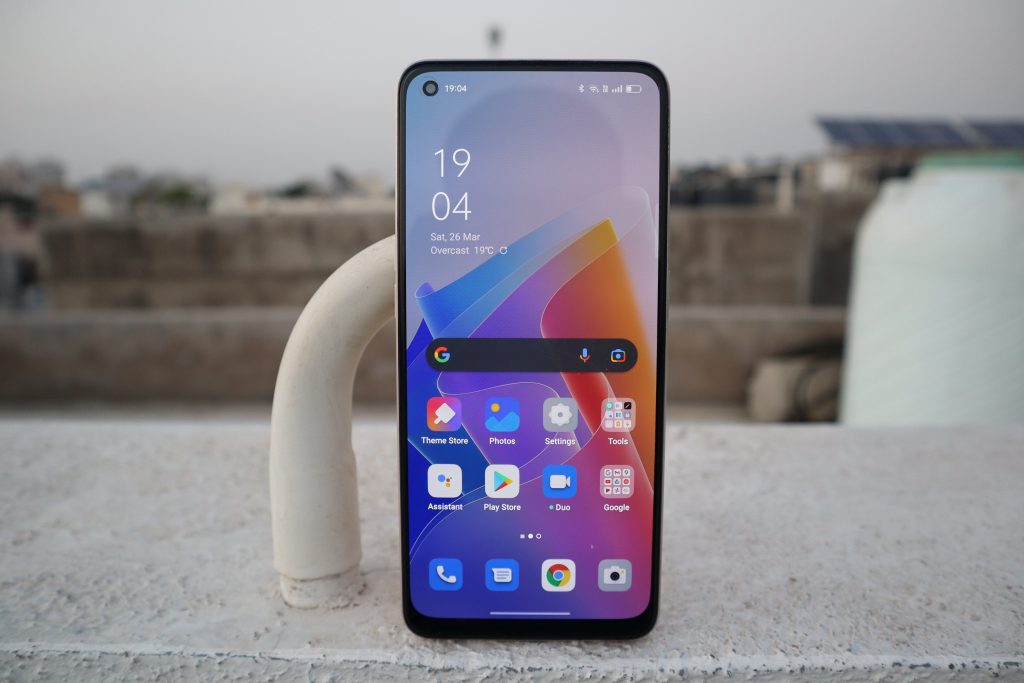
As far as the performance of the screens is concerned, they are almost identical with one minor difference. The color tone is cooler on the 5G model and warmer on the 4G variant. They are good for consuming content and can get bright enough under direct sunlight. These displays are fine but nothing out of the ordinary.
Further, though they have support for HDR10 and HLG standards, they cannot play HDR videos on YouTube or any other streaming platform. However, both have Widevine L1 certification (which was not present on the 4G model when its review was published) and are able to play FHD (1080p) content on Netflix and Prime Video.
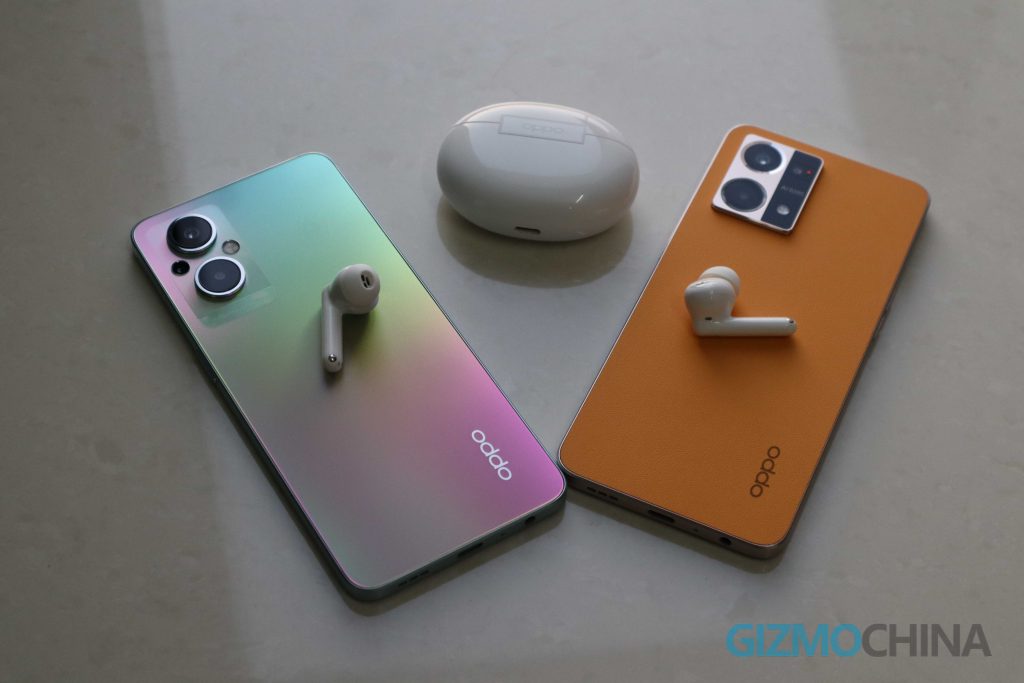
Talking about sound, both the phones house a single bottom-firing speaker. But their audio output is slightly different from one another. I prefer the one on the 4G handset as it is not only louder but also sounds fuller with less distortion at higher volume levels.
As far as wireless sound performance is concerned, it is near identical on both of them. I paired the Oppo Enco Air 2 Pro with these phones, and they sounded the same when connected to either of them.
However, only the 4G model has support for ColorOS quick pairing. On the 5G model, users need to enter pairing mode as they need to for devices from other brands. It is possible for Oppo to add this feature via a software update, but we are not sure if and when it will arrive.
Hardware and Software
The major difference between the Oppo F21 Pro and the Oppo F21 Pro 5G is their chipsets. The former houses a 4G-only Qualcomm Snapdragon 680 SoC, while the latter is powered by a 5G-enabled Qualcomm Snapdragon 695 SoC.
The two of them sport 8GB LPDDR4x RAM and 128GB UFS 2.2 storage. But only the 4G smartphone has a MicroSD card slot (dedicated).
Oppo F21 Pro Benchmark
Undoubtedly, the 5G model is faster as it has a better chip. But since it lacks a high refresh rate display, I felt the 4G model to be smoother to my eyes, though it is slower.
As you can see from the screenshots, the F21 Pro 5G scores way more on AnTutu Benchmark. Even on Geekbench, it has a better score than the F21 Pro. Only if it had a 90Hz display, the experience would have been even better.
Oppo F21 Pro 5G Benchmark
On the software front, despite being cheaper with a less-powerful chip, the 4G handset boots ColorOS 12 based on Android 12. Whereas, the 5G variant comes with Android 11-based ColorOS 12.
The software on the two phones is almost identical, and they even come with the same bloatware, most of which is uninstallable. But the 5G version lacks new Android 12-exclusive features like granular location permission, camera/microphone indicator, and more.
Camera
The two phones have different camera systems. But one thing is common between them. Though they have triple cameras on the rear, only one of these sensors is useful, in addition to the front-facing camera.
The Oppo F21 Pro arrives with a 64MP primary camera, a 2MP snapper with a 15x microlens, a 2MP depth sensor, and a 32MP shooter for selfies. On the other hand, the Oppo F21 Pro 5G comes equipped with a 64MP primary camera, a 2MP macro shooter, a 2MP monochrome sensor, and a 16MP selfie camera.
Oppo F21 Pro Camera Samples
Despite featuring the same 64MP OmniVision OV64B sensor as their main camera, the output is different from these handsets. This is likely due to the presence of different ISPs and software processing.
The pictures from the 5G version have warmer color tones as opposed to cooler color tones in the images from the 4G variant. Further, the pictures from the latter phone are more vibrant due to higher saturation. None of them can produce accurate colors, but the images from the 4G handset are more pleasing to the eyes.
Oppo F21 Pro 5G Camera Samples
As mentioned in my review of the Oppo F21 Pro, human skin tones are almost accurate in the images from this smartphone. But the same cannot be said for the Oppo F21 Pro 5G since it’s totally opposite. Though I don’t like the selfies from either of these handsets, the output from the 4G model is better.
In low-light conditions, both of them cannot output good-quality pictures. Night Mode does not help either. As far as video recording is concerned, the devices are limited to 1080p resolution and the quality is acceptable in good lighting without much stabilization and is not recommended for low-light situations.
Connectivity
The connectivity options on the Oppo F21 Pro and the Oppo F21 Pro 5G are identical, except for the 5G support on the latter. They feature dual SIM card slots, dual-band WiFi 5, Bluetooth 5.1, and GNSS.
I did not face call drops on either of them. The WiFi connection works well as it should, and so do Bluetooth and GNSS.
I could not test 5G on the Oppo F21 Pro 5G as the networks are yet to go live in India. When they do go live, users should be able to experience the latest cellular technology, but the same cannot be said for the Oppo F21 Pro users.
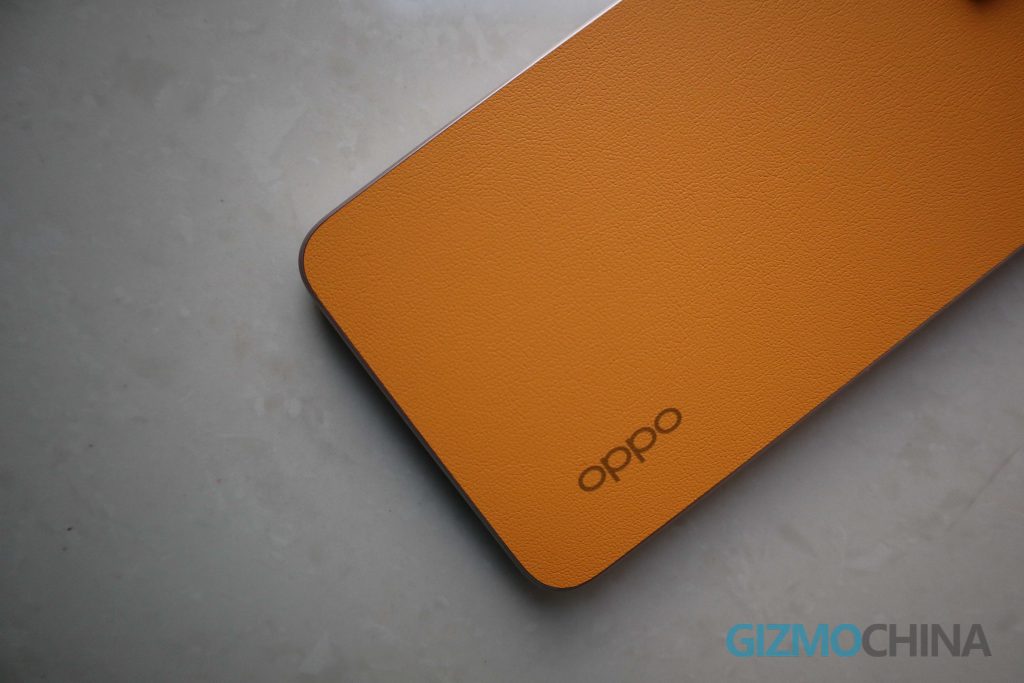
Battery and Charging
Both the Oppo F21 Pro and the Oppo F21 Pro 5G are fueled by the same 4,500mAh battery. They also have support for the very same 33W Oppo SuperVOOC fast charging protocol.
But during my usage, I found out that the 5G device actually charges a bit faster. It is roughly around 8 minutes faster as it takes about 1 hour and 14 minutes to reach 100% from 10% as opposed to around 1 hour and 22 minutes required by the 4G handset.
Since the SoCs featured in these smartphones are built on a 6nm process, they are energy-efficient. The devices can easily last a day on a full charge on normal usage.
Verdict
Even though the Oppo F21 Pro 5G has a faster chipset, it is not enough for me to recommend it over the Oppo F21 Pro. The 4G variant does most of the things better. It even looks unique in the orange color and feels better in the hands.
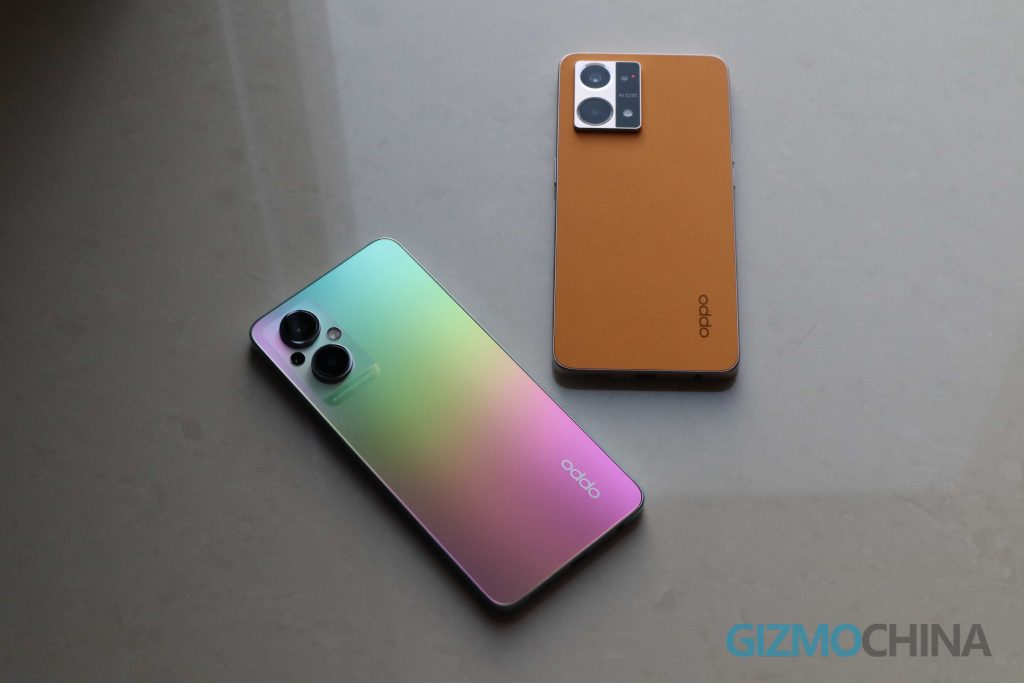
The cherry on top is that the 4G version is ₹4,000 cheaper than the 5G model. The price further paints a clear picture that the Oppo F21 Pro is truly the winner of the two.
With that being said, as I mentioned in my review, the Oppo F21 Pro itself is not the best option in this price segment. But if you are in the market for either of these two devices, you should probably go with the 4G model instead of the 5G one.
RELATED:
- OPPO Reno7 Pro Review: Shiny New Flat Design, Solid Software, & Capable Cameras
- OnePlus Nord CE 2 5G Review: Fancier Design but no Major Hardware Upgrades
- OPPO Reno7 5G Review: Good Looks Alone Don’t Make a Worthy Upgrade
- ColorOS 12 Review: A Step In The Right Direction

